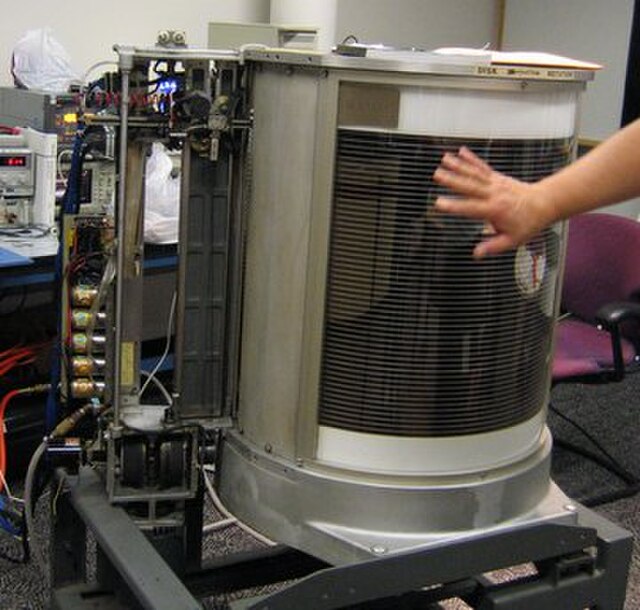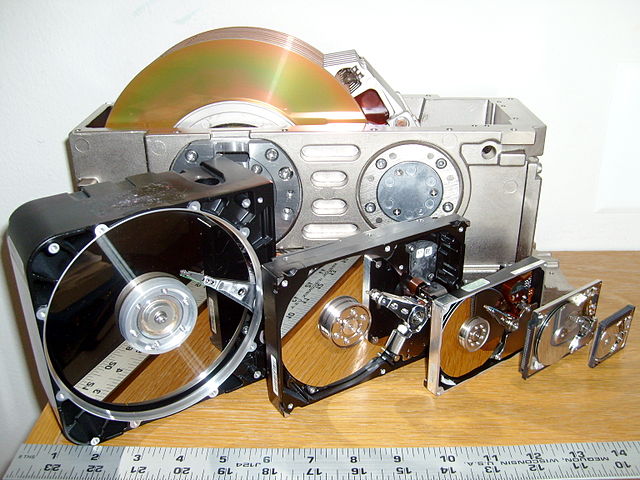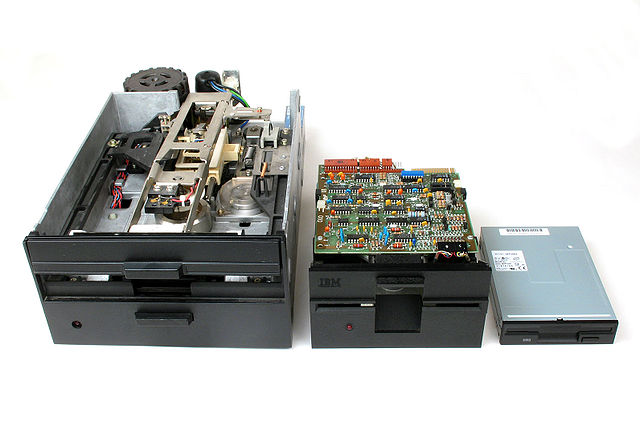History of IBM magnetic disk drives
IBM manufactured magnetic disk storage devices from 1956 to 2003, when it sold its hard disk drive business to Hitachi. Both the hard disk drive (HDD) and floppy disk drive (FDD) were invented by IBM and as such IBM's employees were responsible for many of the innovations in these products and their technologies. The basic mechanical arrangement of hard disk drives has not changed since the IBM 1301. Disk drive performance and characteristics are measured by the same standards now as they were in the 1950s. Few products in history have enjoyed such spectacular declines in cost and physical size along with equally dramatic improvements in capacity and performance.
IBM 305 at U.S. Army Red River Arsenal, with two IBM 350 disk drives in the foreground
RAMAC mechanism at Computer History Museum
IBM 1311 disk drive with IBM 1316 removable disk pack at the Computer History Museum
IBM 2311 Disk Storage Drive, with its six platters
Disk storage is a data storage mechanism based on a rotating disk. The recording employs various electronic, magnetic, optical, or mechanical changes to the disk's surface layer. A disk drive is a device implementing such a storage mechanism. Notable types are hard disk drives (HDD), containing one or more non-removable rigid platters; the floppy disk drive (FDD) and its removable floppy disk; and various optical disc drives (ODD) and associated optical disc media.
Six hard disk drives
Three floppy disk drives
A CD-ROM (optical) disc drive







